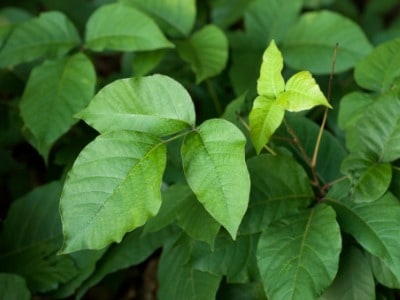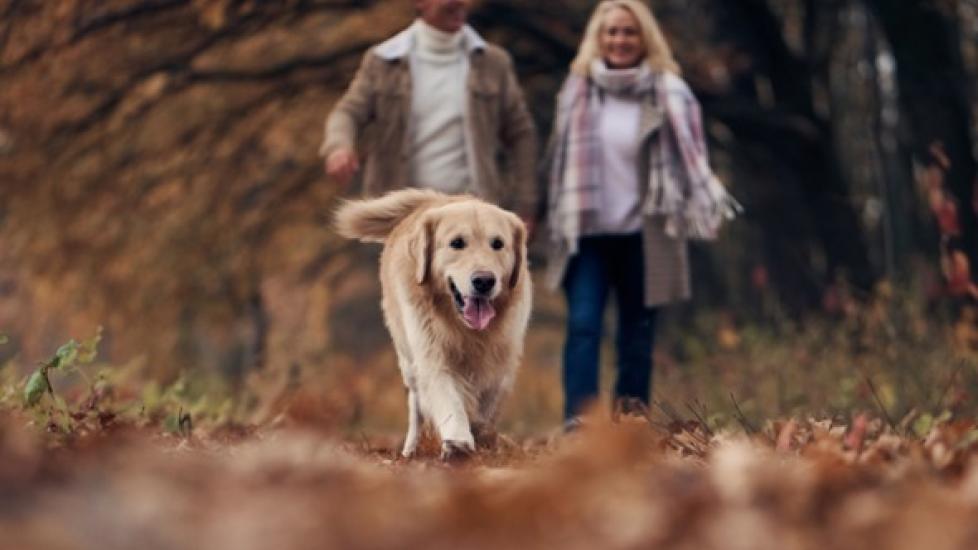Can Dogs Get Poison Ivy?
You never want to come home from a long day of hiking to discover that at least part of the adventure involved exposure to poison ivy. Although you may have gotten this excruciating rash, your dog may have had no problems whatsoever.
How does this happen? Can dogs get poison ivy rashes, or does all that fur protect them?
Key Takeaways
- Poison ivy reactions are caused by an oil in the plant called urushiol oil.
- Although poison ivy rashes are common in people, they’re very rare in dogs.
- Even though dogs might not get poison ivy, they can still carry the oils on their fur and transfer them to you.
- If your dog walks through a patch of poison ivy, put on rubber gloves and wash your dog as soon as possible.
What Is Poison Ivy?
Poison ivy is a plant that contains an oily resin called urushiol on the leaves, stems, and roots. When it comes into contact with skin, this resin produces a reaction in the form of a rash.
The resin is also found on other plants, such as poison sumac and poison oak, which can cause the same skin reaction as it does with poison ivy.
What Does Poison Ivy Look Like?
Most people have heard the line, “leaves of three, let it be.” Poison ivy does in fact have three leaves and “alternate branching”—where the stems alternate to the left and then the right (as opposed to being arranged side by side)—and never has thorns.

Poison ivy can actually appear as a plant, a vine, or even a shrub or small tree. And, to add insult to injury, not only can poison ivy cause an itchy rash, but so can poison oak and poison sumac.
Depending on the part of the world you live in and where you and your dog like to hike, it’s possible to be exposed to several plants, all of which can cause a similar rash. These plants can grow in open fields, wooded areas, and roadsides; along riverbanks; and even in urban areas.
What Causes the Poison Ivy Reaction?
Poison ivy reactions are caused by an oil in the plant called urushiol oil. You don’t have to come into direct contact with poison ivy to have a reaction. If the oil gets on your tools while you’re working in the garden, on your clothing while running with your pup in the woods, or even on your dog’s coat during a hike, it’s possible for you to become infected on contact with these oils.
The most dangerous reaction can happen if the oil is aerosolized. For example, inhaling the smoke from burning poison ivy can cause a very severe reaction, which can land people in the hospital.
Can Dogs Get Poison Ivy Rashes?
Although poison ivy rashes are common in people, they’re very rare in dogs. So, while it’s possible for a dog to get a poison ivy rash, it’s not something you need to worry about when hiking.
That said, if your dog ingests poison ivy, it can cause an allergic reaction that usually manifests as gastrointestinal (GI) symptoms, including vomiting, diarrhea, drooling, and a reluctance to eat.
If you notice a rash on your dog’s skin and you think it may be caused by a plant, contact your veterinarian. In the meantime, you can give your dog a soothing oatmeal bath.
Can Dogs Get Poison Oak?
Poison oak is the same species of plant as poison ivy and contains the same toxic resin. Just like with poison ivy, it’s possible for a dog to get a poison oak rash, but it’s highly unlikely.
Symptoms of Poison Ivy in Dogs
If your dog does develop a poison ivy reaction, symptoms include:
-
Red bumps or rash
-
Itchy skin
-
Excessive licking of the skin and fur
Symptoms of poison ivy ingestion are:
-
Vomiting
-
Salivating/drooling
-
Nausea
Treating Poison Ivy in Dogs
If your dog comes into contact with poison ivy, dry wipe them as quickly as possible. This will hopefully prevent the toxic oils from reaching your dog’s skin. Avoid petting your dog and wear gloves when wiping them down so you don’t get a poison ivy reaction as well. If your dog begins itching, bathe them in an oatmeal shampoo.
If your dog ate part of the poison ivy plant or develops a skin rash, call your vet or the Pet Poison Helpline at 855-764-7661 as soon as possible. If the rash or stomach upset is significant enough, your vet might choose to start your dog on antibiotics and/or steroid medications. They might also recommend a special ointment for your dog’s skin to decrease the allergic reaction.
Can You Get Poison Ivy From Your Dog’s Fur?
Even though dogs might not get poison ivy, they can still carry the oils on their fur—and then transfer these oils to you and your family. This is why it’s important to wipe down and bathe your dog after exposure, even if they show no signs of a reaction themselves.
How to Get Poison Ivy Out of Your Dog’s Fur
If your dog walks through a patch of poison ivy, address the exposure as soon as you can. Put on rubber gloves and wash your dog as soon as possible after known exposure. Use a shampoo such as Tecnu® (a poison ivy cleansing treatment) or an anti-seborrheic or keratolytic shampoo to minimize exposure.
These shampoos are most effective when used immediately, so you should always carry them with you when hiking, camping, or spending time in areas that might have poison ivy.
Featured Image: iStock.com/Vasyl Dolmatov
